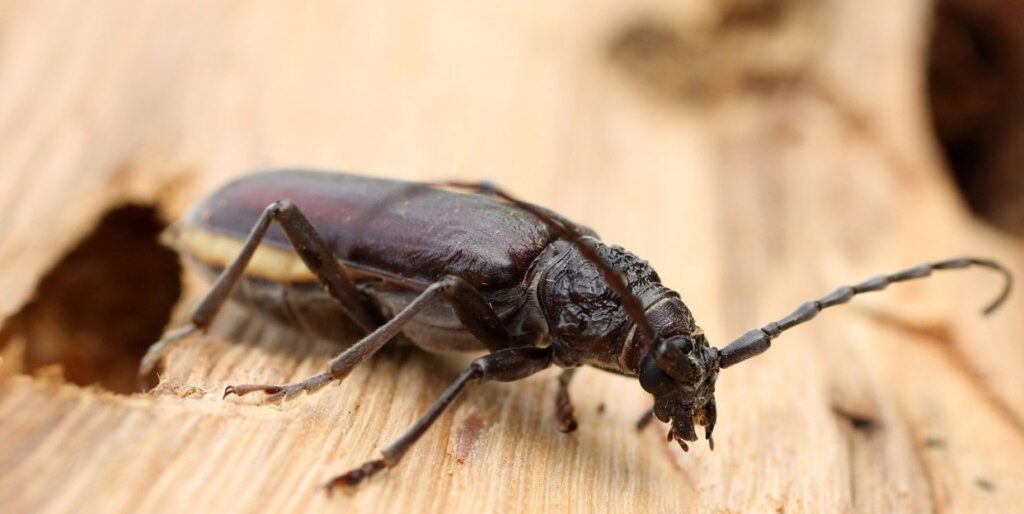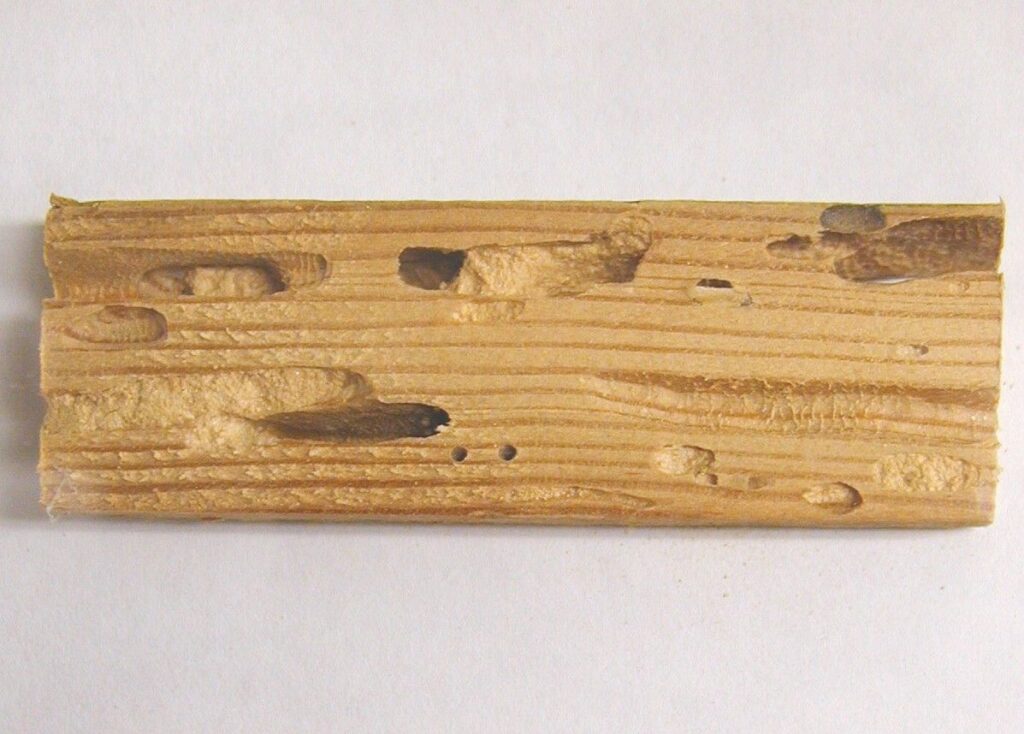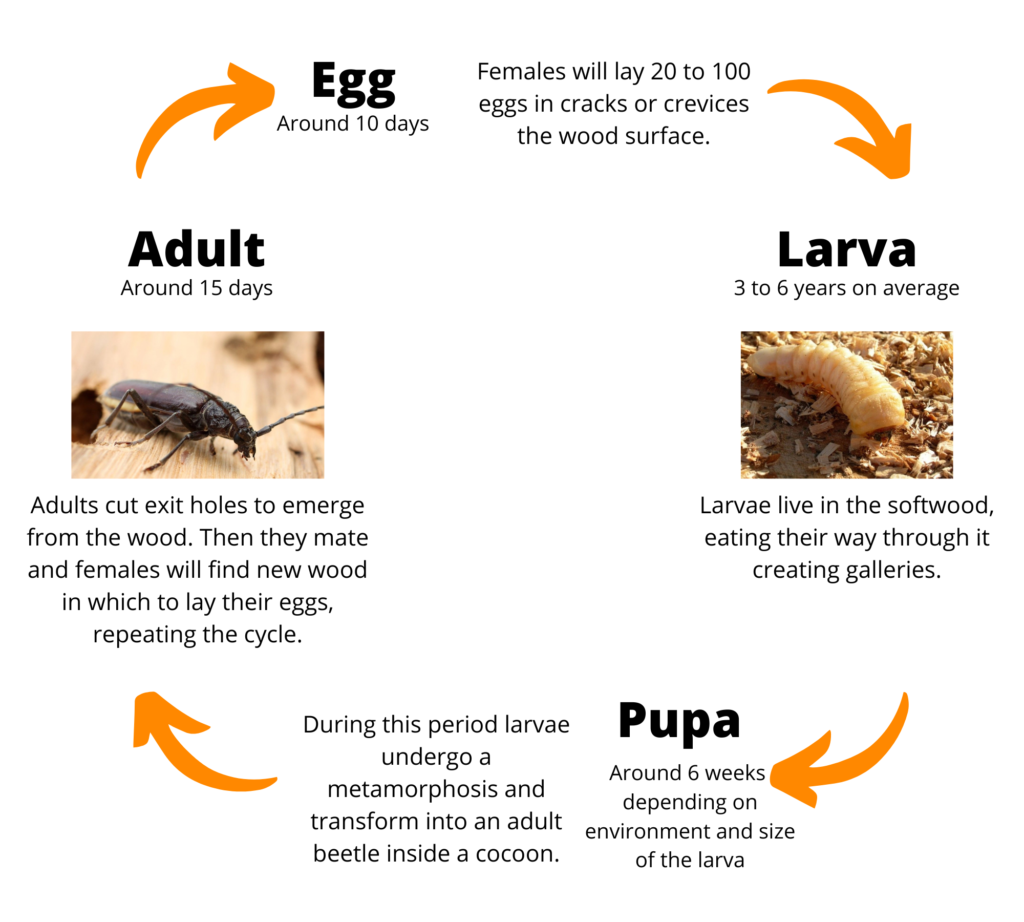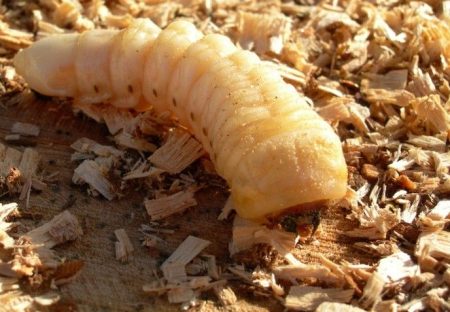
Old house borer beetles (Hylotrupes bajulus)
Old House Borers, also called longhorn beetles, belong to the Cerambycidae family.
In the United States, Old House Borer infestations are most common in the eastern half of the country. While their name might suggest they primarily attack older homes, these beetles are actually more often found in newer ones. Much like their powderpost beetle cousins, old house borer larvae need a moisture-rich environment to survive. Being able to recognize the type of beetle attacking the wood can help choose the correct treatment if necessary.
Learn more about Wood Boring Beetles here.
Identifying old house borers
Adult old house borers have ⅝ to 1 inch long, flattened bodies with long antennae. They are a grayish-brown to black color with tiny gray hairs on the head and parts of the wing covers. To further distinguish them, they have two shiny black spots on the pronotum and two white patches on their wing covers (elytra). Their larvae are about an inch long, whitish in color, and have 3 small eyespots on each side of the head. The larvae can spend anywhere from 2 to 15 years developing inside and feeding on the wood before emerging.
Since adult beetles are rarely seen and larvae stay hidden within the wood, it is important to know where and what to look for too. Similar to several others, only the larvae feed on the wood, however old house borers prefer softwoods. In particular they tend to attack the sapwood of pine, fir, spruce and other softwoods. After spending years (sometimes up to 15) developing, larvae emerge as adults via ¼ to ⅔ inch oval exit holes. Sometimes these exit holes may have a jagged appearance, although they can be difficult to spot in darker woods. Additionally, larvae make a faint clicking sound as they chew through the wood although this is not usually heard by humans.


Old house borer beetle habits
Even though old house borer beetles prefer softwood, they do still require a certain level of humidity in order to thrive. The specific conditions within the wood influence the amount of time larvae need for development. In cooler regions, or if the conditions of the wood are less than favorable, development can sometimes take up to 15 years. Wood with a higher moisture content, from 15 to 25%, is ideal, allowing larvae to develop in as little as 2 years. Wood with a moisture content below 10% however, is unable to support larval development meaning the larvae are likely to die. The average time old house borer larvae need for development is anywhere from 3 to 6 years.
For old house borers, new adults usually emerge in the spring although this isn’t always the case. This is all dependent upon the conditions within the wood which help or hinder larval development. When the new adults do merge from the wood, they push out a powder-like substance called frass. Old house borer beetle frass is coarse, containing small barrel-shaped pellets. This may be found in piles below infested areas as well as tightly packed in exit holes. Frass may be an indicator of an active infestation, however if frass is not present or covered in cobwebs or dust, this could mean the infestation has since ended.
Old house borer preferences
Despite the name “old house” borer, these beetles actually prefer newer wood to older. Due to this, infestations typically happen in newer homes and are most common in buildings less than 10 years old. Initial infestation generally occurs when eggs or larvae are brought inside through the lumber during construction. Luckily, first generation infestations tend to remain quite localized which allows for easier treatment. Unfortunately, because the larvae can feed for extended amounts of time depending on conditions, they are still capable of considerable damage. Additionally, if conditions remain favorable, new generations of old house borers are able to reinfest softwoods, causing extensive damages over several years. Reinfestations are most common in wood with excessive moisture in locations such as basements or crawl spaces.

If you notice signs of wood damage and are unsure of the cause we recommend contacting your local pest management professional. They will be able to assess and treat the problem if needed.
To purchase MABI injectors to treat structural wood, contact one of our distributors.